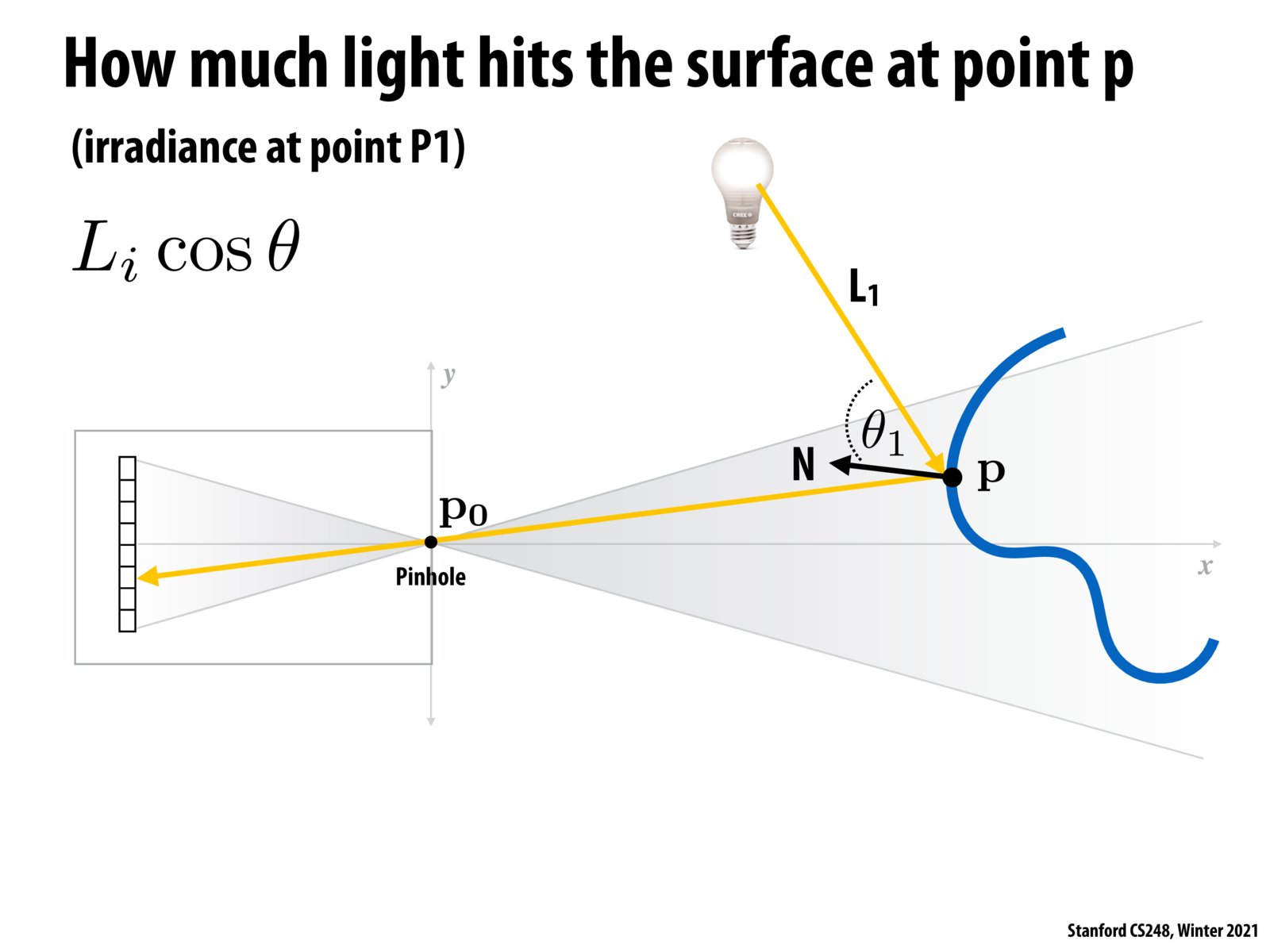
Back to Lecture Thumbnails

sman64

tsk
^ i think it doesn't need to be the same unless the surface is a mirror

jeyla
Where is point p1 on this slide?

movissup2
@jeyla, it is p.

manuforo
Does this mean that if theta is equal to 90 degrees, no light will be reflected into the pinhole?

renderMyCatsNow
@manuforo I believe so.
Please log in to leave a comment.
Copyright 2021 Stanford University
Wouldn't the angle on either side of the normal need to be the same for the light ray to be reflected to p0?